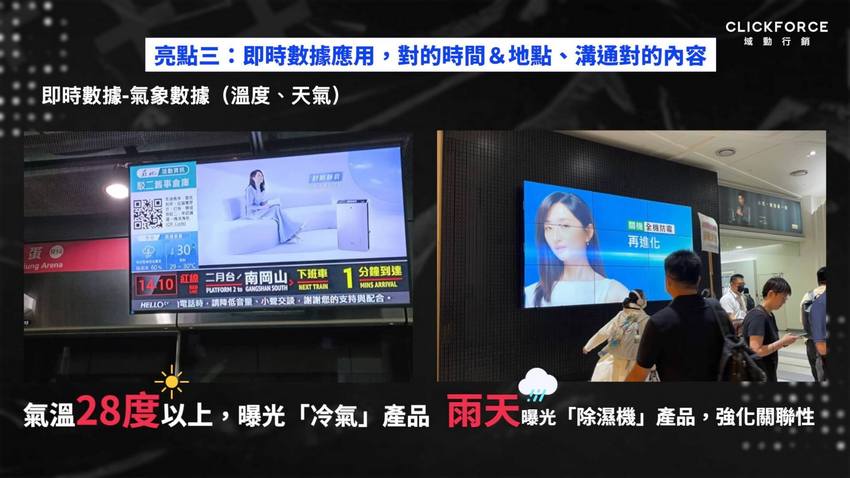
In a digital environment where consumers are more accessible than in the past, how to make good use of data to drive marketing strategies has increasingly become the key to brand success. Panasonic Home Appliances, with the assistance of Domain Marketing, uses five fireflies linked exposure and real-time data applications to maximize the effectiveness of brand advertising. It combines precise delivery with data applications to expand reach, which not only significantly reduces advertising costs, but also effectively improves Panasonic brand favorability.
This case comprehensively uses the 4+1 highlight strategy to fully demonstrate the importance of data in modern marketing.
Highlight 1: Hybrid data application, accurately targeting target customer groups
By combining multiple data sources, Panasonic successfully targeted its target customer groups. From Internet data to consumer behavior habits and preferences, we can find the common characteristics of potential customers through in-depth analysis, thereby formulating more effective marketing strategies. This precise targeting method not only improves the effectiveness of advertising, but also better meets the needs of consumers, allowing every budget to be spent accurately and without waste.
Internet data: targeting target audiences interested in home appliances
Focus on recent topics that are highly related to home appliances, such as home life, physical health, and people's livelihood consumption. I have searched for weather, rainy season, mold/mold removal, dehumidification, etc.
Data: Target the target audience who are willing to purchase home appliances in the near future
Target users who have visited competing product websites within six months or who have visited sales points in home appliance channels
Invoice data: targeting the targe
Find out those who have recorded consumption records of "home appliances" and chain home appliances channelst audience who will purchase home appliances
Highlight 2: Spread across five major screens and expand brand awareness
Today, the touch points between brands and consumers are no longer limited to TV ads. Panasonic penetrates deeply into consumers' daily lives by spanning TVs, mobile phones, tablets, connected TVs and digital outdoor signage (DOOH). Such a multi-channel strategy not only fills the gaps in digital advertising reach at all stages of consumers' daily lives, but also effectively expands brand awareness. By spreading across multiple screens, Panasonic has successfully established the brand's exposure in different situations, further enhancing the interaction between the brand and consumers.
Highlight three: real-time data application, accurate advertising

This campaign cleverly used real-time data applications to correlate advertising creatives with environmental conditions to avoid wasting advertising budgets. This enables brands to deliver the right content to consumers at the right time and place. For example, air quality is directly displayed in the advertising material, or the advertising content is adjusted based on weather data. When the temperature is above 28 degrees, "air conditioner" products are exposed, and when it rains, "dehumidifier" products are exposed. This strategy further enhances consumer awareness. Advertising feels connected and thoughtful. This precise placement strategy not only improves the exposure efficiency of advertising, but also enhances consumers' goodwill towards the brand.
The data is collected on consumers’ presence and absence at DOOH locations, and advertisements are pushed to consumers’ mobile phones and computers again. This not only seizes the opportunity of offline exposure, but also communicates again online, increasing consumers' memory of the advertisement, allowing the brand to effectively increase viewing intention, while optimizing cost-effectiveness.

Combining the above four strategies + in order to ensure the effectiveness of advertising, use third-party post-test to check the effectiveness
In order to verify the accuracy of the advertising effect, a third-party survey agency "Nielsen" was used to evaluate the execution effect of the advertising project. By comparing the performance of the two groups of respondents who have "seen the advertisement" and "have not seen the advertisement" in terms of advertising project execution, the purchase intention of the target audience who has seen the advertisement is as high as 95%, successfully proving the accurate advertising strategy. It can indeed effectively convey information and enhance brand favorability and purchase intention.
With data as the core, the programmatic marketing system is used to maximize advertising benefits. Through hybrid data applications, Wuying live broadcast, real-time data applications, OMO cross-fire remarketing, and third-party post-testing, Panasonic has successfully established a positive image of the brand in the minds of consumers, and at the same time allowed consumers to better understand the characteristics of the products. Favorability increases.





